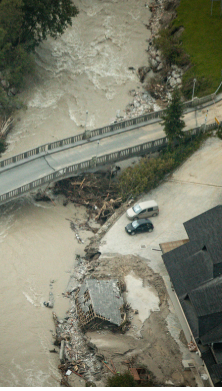The devastating floods in Germany, Belgium, Austria and the Netherlands are also placing new demands on risk management for companies outside designated flood zones.
Thomas Heintz, risk engineer at Allianz Global Corporate & Specialty (AGCS), advocates a basic emergency plan and explains what measures should be considered during reconstruction.















